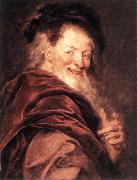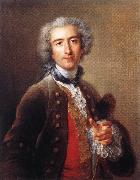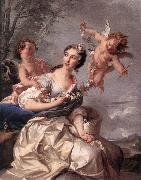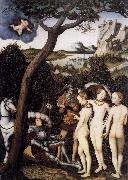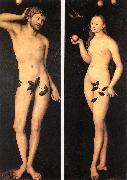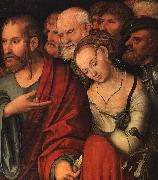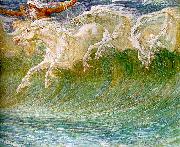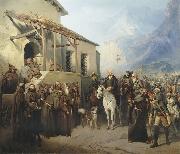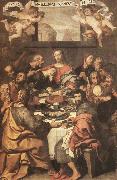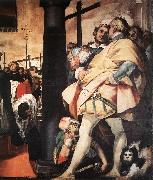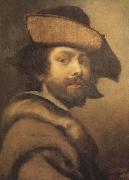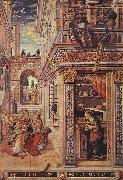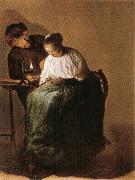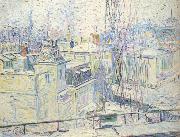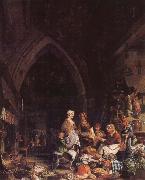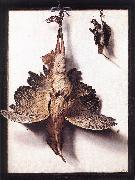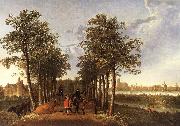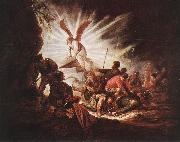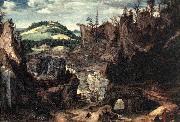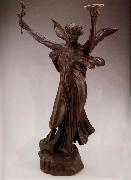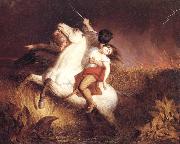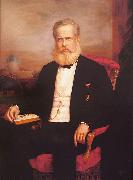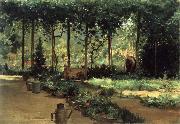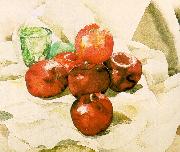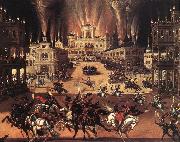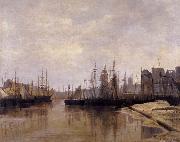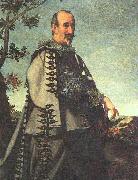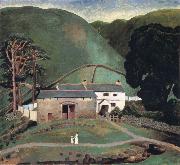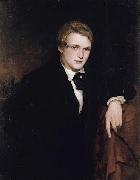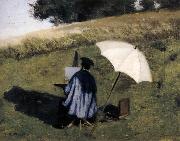|
|
|
|
|
|
|
|
|
|
|
|
|
|
|
|
|
|
|
|
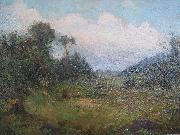 |
Creator:Edmond Dyonnet
|
|
He was born on 25 June 1859 in Crest (Drôme), France, from the marriage of Ulysses-Alexandre Dyonnet, industrialist, and Goullioud Albine. The real family name is Guyonnet de Pivat but due to an error of births during the French Revolution, the surname became Dyonnet. Edmond died in Montreal on 7 July 1954, at age 95. He was buried with his family in the cemetery of Notre-Dame-des-Neiges, in Montreal.
Edmond had two younger sisters, Emma Dyonnet, wife Lorin (1866-1947) and Clemence Dyonnet, wife Chabot (18? -1905). Ulysses, the father of Edmond, had an older brother Leon Dyonnet Goullioud who married Helen, the sister of Albine. Leon Dyonnet made a fortune in corsets for women in association with Amyot from 1886 to 1891 and set up the Dominion Corset company, rue de la Couronne in Quebec City. The couple had a daughter artist, cousin of Edmond Dyonnet: Eugenie Dyonnet, who immigrated to Canada in 1872 and died in 1875 in Montreal.
Edmond Dyonnet was born in Drôme in 1859, and at 9 years old, he followed his father and migrated to Italy, he continued his primary education in Turin, from 1868 to 1873, in municipal schools and then returned to France with his family in the Drôme. He studies at Crest high school from 1873 to 1875. His father Ulysses met in Paris the brother of Judge George Baby who convinced him to emigrate to Quebec.
|
|
|
|
|
|
|
|
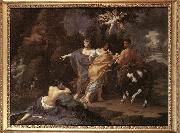 |
CRETI, Donato
|
|
Italian painter, Bolognese school (b. 1671, Bologna, d. 1749, Bologna) |
|
 |
Cristiano Banti
|
|
Italy (Santa Croce Sull'arno 1824-Montemurlo 1904 ) - Painter |
|
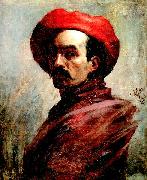 |
Cristobal Rojas
|
|
Cristobal Rojas (Cua, Miranda, 15 December 1857 e Caracas, 8 November 1890) was one of the most important and high-profile Venezuelan painters of the 19th century. Rojas's styles varied considerably throughout his life, and he displayed talents in painting that ranged primarily for dramatic effect, to works done in the Impressionist style.
Cristebal Rojas Poleo was born in the city of Cea in the Valles del Tuy to parents who worked in the medical profession. Part of his childhood occurred during the middle of the federal war (1859 - 1863) and Cea was particularly affected by the events of the war. He initiated studies under his grandfather, Jose Luis Rojas, who taught him how to draw and motivated him to improve. At 13 years old, his father died and he was forced to begin work in a tobacco factory in Cea to help support his family. In 1878, an earthquake devastated the Valles del Tuy region, and the Rojas faced poverty. As a result he moved to Caracas where he continued his painting studies, despite again having to work in the tobacco industry to support his mother and family.
In Caracas he attended classes by Jose Manuel Mauco at the Universidad Central de Venezuela. Between 1880 and 1882, he developed a keen interest in oils and displayed a primitive technique that would prevail in his later paintings such as Ruinas de Cea despues del Terremoto and Ruinas del templo de la Merced. During this time he became acquainted with the painter Antonio Herrera Toro, also coming under contract as Toro's assistant to paint Caracas Cathedral.
|
|
|
|
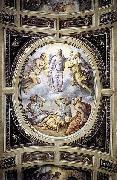 |
Cristofano Gherardi
|
|
(November 25, 1508 - April 1556) was an Italian painter of the late-Renaissance or Mannerist period, active mainly in Florence and Tuscany.
He was born in Borgo San Sepolcro and also called il Doceno dal Borgo. He was the pupil of the painter Raffaellino del Colle, in whose shop he encountered Rosso Fiorentino and Giorgio Vasari. He painted under Vasari's direction, the one assistant of Vasari's whom Sidney J. Freedberg singles out.
In 1536 Vasari invited him to Florence to assist in producing the decorations for the ceremonial entry of Charles V into Florence. The following year, in the reaction after Duke Alessandro's death, Gherardi was among those banished from Florence, so his work for Vasari was confined to projects outside Florence, until his banishment was lifted in 1554 and he was permitted to return . In the long interval he had painted the Visitation of Mary to Elizabeth for the church of San Domenico in Citte di Castello, church decorations in San Sepolcro, and works for the Vitelli, who were long-term patrons. Gherardi, in the two years left to him, assisted Vasari in the Quartiere degli Elementi in Palazzo Vecchio. Vasari's main assistant after Gherardi's demise was Jan van der Straat, called Giovanni Stradano.
|
|
 |
Cristoforo Munari
|
|
(July 21, 1667 - June 3, 1720) was an Italian painter of the late-Baroque specializing in still life paintings. He was also known as Cristofano Monari.
His initial training was in Reggio Emilia, his birthplace, and he came under the patronage of Rinaldo d'Este, Duke of Modena. In 1703-1706, he lived in Rome, then moved to Florence, where for about a decade he was attached to the court of the Medici. His still life paintings recall those of Evaristo Baschenis; however, the added disarray of porcelain, glass, and foodstuffs, suggest the hangover from the jovial surfeit of the Medici court. He painted also panoplies and war trophies. In 1715 he moved to Pisa where he worked almost exclusively in art restoration; he died in 1720.
An exhibition of his paintings took place in 1998 in Reggio Emilia, where it attracted wide attention and was a national success.
|
|
|
|
 |
CRIVELLI, Vittorio
|
|
Italian painter, Venetian school (b. ca. 1440, Venezia, d. 1501/2, Venezia) |
|
|
|
|
|
|
|
|
|
|
|
|
|
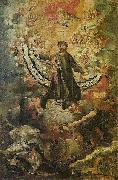 |
Cuzco School
|
|
The Cuzco School (Escuela Cuzqueña) was a Roman Catholic artistic tradition based in Cusco, Peru (the former capital of the Inca Empire) during the Colonial period, in the 16th, 17th and 18th centuries. It was not limited to Cuzco only, but spread to other cities in the Andes, as well as to present day Bolivia and Ecuador.
|
|
|
|
|
|
|
|
 |
Daniel Chodowiecki
|
|
(16 October 1726 - 7 February 1801) was a Polish - German painter and printmaker with Huguenot ancestry, who is most famous as an etcher. He spent most of his life in Berlin, and became the director of the Berlin Academy of Art.
He was born in the city of Danzig in Poland, and in a letter in typical Berlin humor wrote, that he moved to Berlin, Germany, which shows for sure, that he is a 'genuine Pole'.[citation needed] He kept close to the Huguenot scene, due to his ancestry. A distant ancestor Bartholom us Chodowiecki had lived in the 16th century in Greater Poland . Gottfried Chodowiecki, Daniel's father, was a tradesmen in Danzig and his mother, Henriette Ayrer born in Switzerland, was a Huguenot. Daniel's grandfather Christian had been a tradesmen in the city as well. When his father died, both Daniel (aged 16) and his younger brother Gottfried Chodowiecki went to live with their uncle in Berlin, who offered to educate them, and where Daniel received an artistic training with the painter Haid in Augsburg. His brother also became a painter.
Soon Daniel was able to earn a living by painting. He was admitted to the Berlin Academy in 1764 and became vice-director under Rhode in 1788. He had found his true calling and became the most famous German graphic artist of his time. His works include several thousand etchings, usually rather small, and many drawings and paintings. He illustrated nearly all of the great classics. His prints represent in great detail the life of the middle classes during the Zopfstil period, a time between Rococo and Classicism. In 1797 Chodowiecki was appointed director of the Academy of Arts in Berlin, where he died on 7 February 1801. The bulk of his work was in illustrating scientific books by Basedow, Buffon, Lavater, Pestalozzi and others. He also painted many portraits of Polish gentry and was interested in Huguenot and Polish history as well, making some paintings on the topic. He was in tune with the developing spirit of the age, and many works reflect the cult of sensibility, and then the revolutionary and German nationalist feelings of the end of the century. |
|
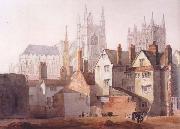 |
David Cox
|
|
David Cox [English Painter, 1783-1859] |
|
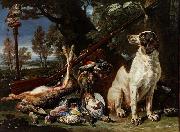 |
David de Coninck
|
|
(ca. 1644 Antwerp - after 1701, Brussels), also known as Rammelaar was a Flemish painter of the Baroque period. David Koninck was born in Antwerp and studied there under Jan Fyt. After a few years in Paris, he staid in Rome from ca 1671 to 1694, where joined the Bentvueghels with the nickname Rammelaar (rattle). He is sometimes stated to have died in Rome in 1687; however, he returned to his home country and is last recorded becoming a member of the painters guild in Brussels in 1701. His pictures are chiefly landscapes with animals and still life. He is likely unrelated to the generally contemporary Dutch painters, Philip de Koninck, or Philips Koninck (5 November 1619, Amsterdam - buried 4 October 1688, Amsterdam) and the fellow townsman Salomon de Koninck.
See Biography by Filippo Baldinucci.
|
|
|
|
|
|
|
|
|
|
|
|
|
|
|
|
|
|
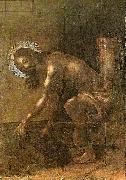 |
Diego de Carpio
|
|
painted Christ gathering his clothes after the Flagellation in 1798 |
|
|
|
 |
domenico chirlandaio
|
|
Domenico Ghirlandaio (1449 - 11 January 1494) was an Italian Renaissance painter from Florence. Among his many apprentices was Michelangelo.
Ghirlandaio's full name is given as Domenico di Tommaso di Currado di Doffo Bigordi. The occupation of his father Tommaso Bigordi and his uncle Antonio in 1451 was given as 'setaiuolo a minuto,' that is, dealers of silks and related objects in small quantities. He was the eldest of six children born to Tommaso Bigordi by his first wife Mona Antonia; of these, only Domenico and his brothers and collaborators Davide and Benedetto survived childhood. Tommaso had two more children by his second wife, also named Antonia, whom he married in 1464. Domenico's half-sister Alessandra (b. 1475) married the painter Bastiano Mainardi in 1494.
Domenico was at first apprenticed to a jeweller or a goldsmith, most likely his own father. The nickname Il Ghirlandaio (garland-maker) came to Domenico from his father, a goldsmith who was famed for creating the metallic garland-like necklaces worn by Florentine women. In his father's shop, Domenico is said to have made portraits of the passers-by, and he was eventually apprenticed to Alessio Baldovinetti to study painting and mosaic. |
|
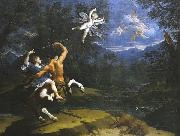 |
Donato Creti
|
|
(1671-1749) was an Italian painter of the Rococo period, active mostly in Bologna.
Born in Cremona, he moved to Bologna, where he was a pupil of Lorenzo Pasinelli. He is described by Wittkower as the "Bolognese Marco Benefial", in that his style was less decorative and edged into a more formal neoclassical style. It is an academicized grand style, that crystallizes into a manneristic neoclassicism, with crisp and frigid modeling of the figures. Among his followers were Aureliano Milani, Francesco Monti, and Ercole Graziani the Younger. Two other pupils were Domenico Maria Fratta and Giuseppe Peroni |
|
|
|
|
|
|
|
|
|
|







